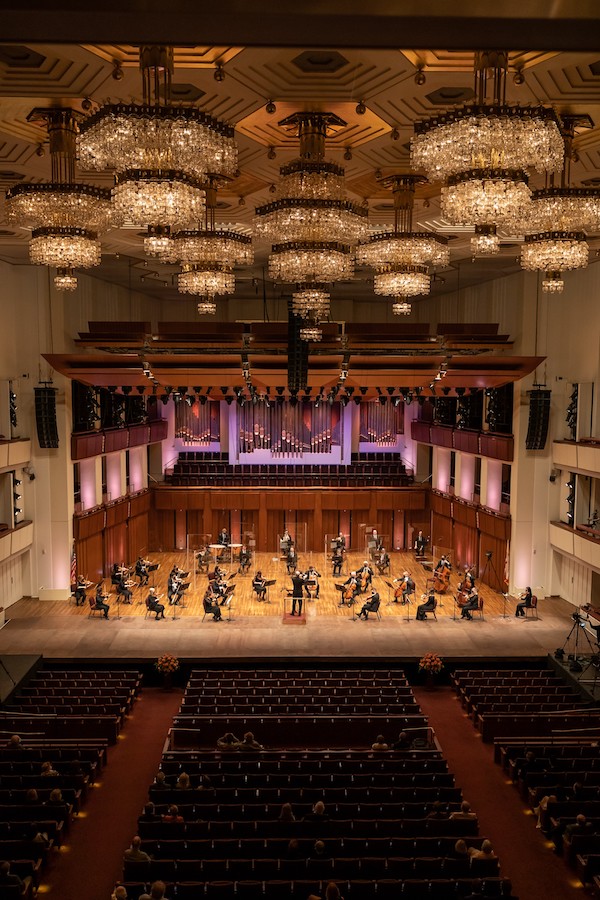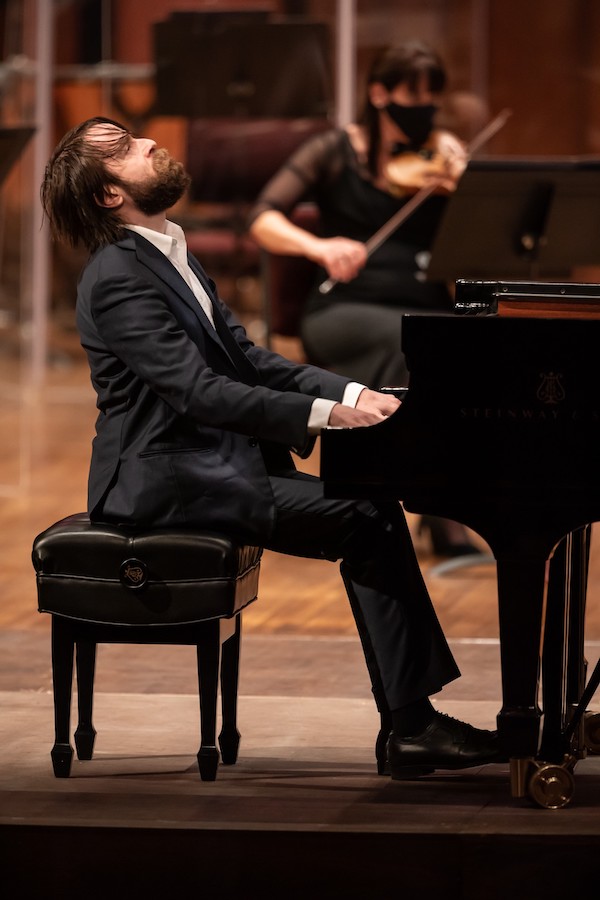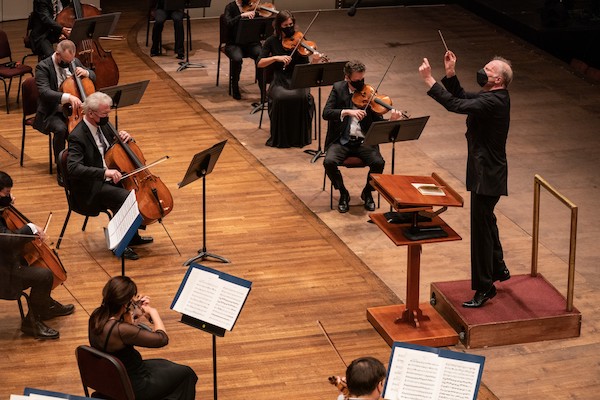NSO, Noseda return live with a little help from their friends

Gianandrea Noseda conducted the National Symphony Orchestra Friday night at the Kennedy Center in their first public concert since the start of the Covid-19 pandemic. Photo: Scott Suchman
Do you remember the happy buzz made by a chatting audience during intermission at the Kennedy Center? Leaving the Concert Hall at the end of February 2020, no one likely suspected we would not hear that sound again for the next fifteen months. On Friday night, after a far-too-long absence, an audience of 236 listeners finally returned to that space to hear a concert performed in person by the National Symphony Orchestra.
There was an emotional speech from Kennedy Center president Deborah Rutter and encouraging ovations from the crowd. Gianandrea Noseda captured the mood most aptly, though, when he spoke before the second half of this full-length program: “Usually I talk longer, but tonight I am overwhelmed and excited.” Putting down the microphone, the expressive Italian conductor preferred to let the music speak for itself.
The program opened with the Four Novelletten for strings by Samuel Coleridge-Taylor (1875-1912). A violinist and composer, he was born in England, but his father’s ancestors had been freed from slavery in the United States, eventually resettling in Sierra Leone. Before his early death at age 37, he took interest in African-American music and was a delegate to the first Pan-African Conference in London.
Exotic tinges appear in these pieces, through dancing rhythms augmented by parts for tambourine and triangle. Noseda shaped and balanced carefully, so that the percussion did not oversalt the soup. The social distancing requirements still mandate a small number of strings, twenty-two players in all. In the first piece, the violas and cellos sounded much warmer and unified on the tune than the violins.
The violin section redeemed itself in the second piece, with a melting tone softened by mutes, in a playful serenade accompanied by pizzicato lower strings. Principal cellist David Hardy had a demure turn in the solo of the B section, answered by a more forthright solo from concertmaster Nurit Bar-Josef in the third piece. In the louder sections, a fuller complement of violins could have provided more of the needed wall of sound.
The limited number of strings also felt lightweight at times in Shostakovich’s Piano Concerto No. 1. Noseda nimbly regulated the ensemble, even as pianist Daniil Trifonov switched gears somewhat unpredictably. The sense of a mad scramble mostly suited the irascible first movement. Trifonov thundered forcefully in the passages with octaves, and principal trumpeter William Gerlach, seated out front to the left of the piano, added Shostakovich’s grotesque highlights.

Daniil Trifonov performed Shostakovich’s Piano Concerto No. 1 Friday night. Photo: Scott Suchman
Gerlach switched trumpets for his muted role in the second movement, matching the smoky intensity of the also-muted strings with his buzzy low range. Trifonov showed an admirable subtlety of touch at the piano, moody in the tragic waltz section and then almost standing to leverage his arm force in the tumultuous middle section. Noseda negotiated the stops and starts in the pastiche of musical allusions in the third movement with clarity, a manic galop ceding to absurd vaudeville-like tunes presented by the trumpet.
Trifonov returned to the frenetic pacing of the first movement in the cadenza, an often-wild jumble of ideas. Clarion cavalry calls from the trumpet marked the exhilarating race to the finish line. If only the crowd had been at full capacity to provide enough applause to elicit an encore from the Russian pianist.
Noseda matched his earlier online foray into Haydn with another of the composer’s London symphonies, the Symphony No. 95, also performed in 1791. Trumpets and timpani added admirable bite to the fuller sections, while Noseda emphasized subtle articulation of overlapping motifs in the contrapuntal development. The variations of the second movement had an easy lilt, with horns and woodwinds making surprise appearances in the minor-mode variation.
At first Noseda micromanaged the Menuetto with insistent, choppy gestures, but once the tempo was negotiated, the orchestra eased into a settled pace. By the time of the trio section, cellist David Hardy was primed to lope gently through the extended cello solo, one of the highlights of the evening, complete with elegant leaps up the A string in a repeated gesture.
Noseda and the orchestra remained a model of clarity and simplicity in the finale, with its sunny turn toward the parallel major. Although the flute and oboes do not have extended solo passages, they joined the strings for florid appearances in this fleet rondo, as did the bassoons. Until the NSO can make a return to the stage-spanning size needed for Strauss or Mahler, more Haydn symphonies should be on the menu.
A video recording of this concert will be streamed to digital subscribers at a future date. kennedy-center.org

Photo: Scott Suchman
